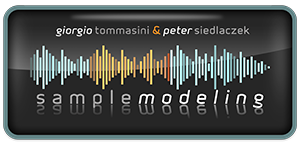What is formant?
In The Trumpet and Trombone, there is a control in soundshaping called formant. I can’t tell that it does anything. I find nothing about it or sound-shaping in general in the manuals. In reading other sources I learn that “formant” is related to resonances in the human voice, so something similar is implied in the Sample Modeling context. I’d like to know more.

Comments
-Michael
do you mean the knob "Harm. Form. Shift" which is per default assigned to CC90? If so, here is the explanation:
the Timbral Shaper, as explained in the User Manual, allows acting on single harmonics or on a group of harmonics. This setting will move along the frequency spectrum depending on the pitch of the note being played, since it is assigned to the harmonic numbers. The assignment of the bars is, per default, 1:1, i.e. the first bar controls the first harmonic, the next bar - the second etc. (see Manual pages 16 and 26 for details and exceptions). However, you can shift these settings along the harmonics in a continuous way, using the knob "Harm. Form. Shift". As soon as you change the setting of this knob (the default setting is 64) you will frequency-shift your harmonic level settings continuously up or down. For example, fully clockwise will shift it one octave higher, turning the knob to the left ("0") will shift it one octave lower. Of course this control will "do" something only if there are changes of harmonic levels applied.
For example: you boost the bar no. 3. This will increase the level of the third harmonic. Turning "Harm Form. Shift" (CC90) up to 127 will "sweep" your settings one octave higher, i.e. it will move your boosted harmonic from the 3rd to the double frequency, which corresponds in this case to the 6th harmonic (across the harmmonnic 4 and 5). Shifting some complex settings to the left or right may create interesting formant - effects (kind of "talking" or "wah-wah" - like).
We hope it helps :-)
Peter & Giorgio
Is there another manual other than the one available at the time (December 2016) I purchased The Trumpet?I have gone through the one I have repeatedly and find nothing that speaks to formant- no mention of the control or even the concept is to be found.
the bar graph is used to select the harmonics (or groups of harmonics) to act upon.
The knobs, and the associated CCs 91-93 are used to modify their relative intensities.
Please refer to pages 16-17 of the Trumpet 3 Manual:
Controllers CC90 – CC93 are reserved for real time control of the Harmonics Gain, related to the entirely new feature of Timbral Shaping (see page 26).
Their default setting is 64. In this “neutral”, middle position the timbre will entirely reflect the bar settings in the Timbral Shaping menu (between -6 dB and +6 dB).
Outside the default value, CC90 – CC93 allow to shape the timbre in real time, according to the following rules:
CC91: controls the first (lowest) active* harmonic or group of harmonics.
CC92: controls the second active* harmonic or group of harmonics (if any).
CC93: controls the third active* harmonic or group of harmonics (if any).
CC90: controls the frequency shift of the harmonics settings (pseudoformant shift).
Best,
Giorgio